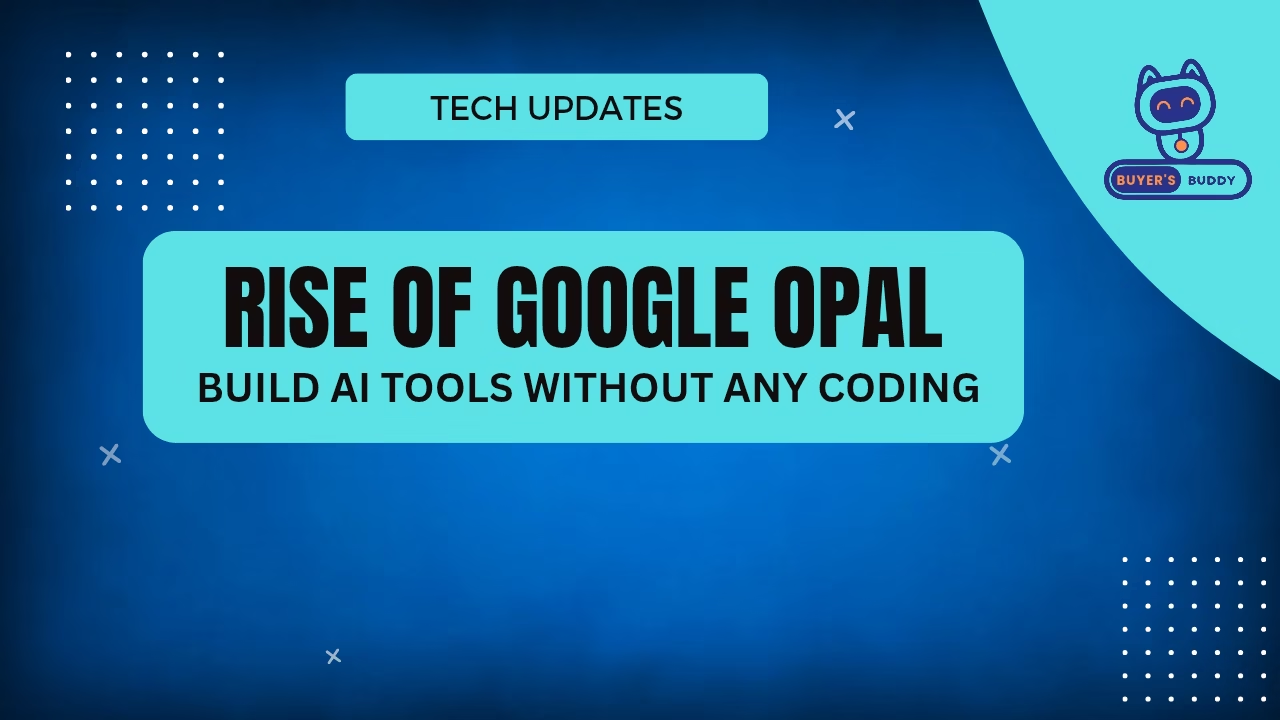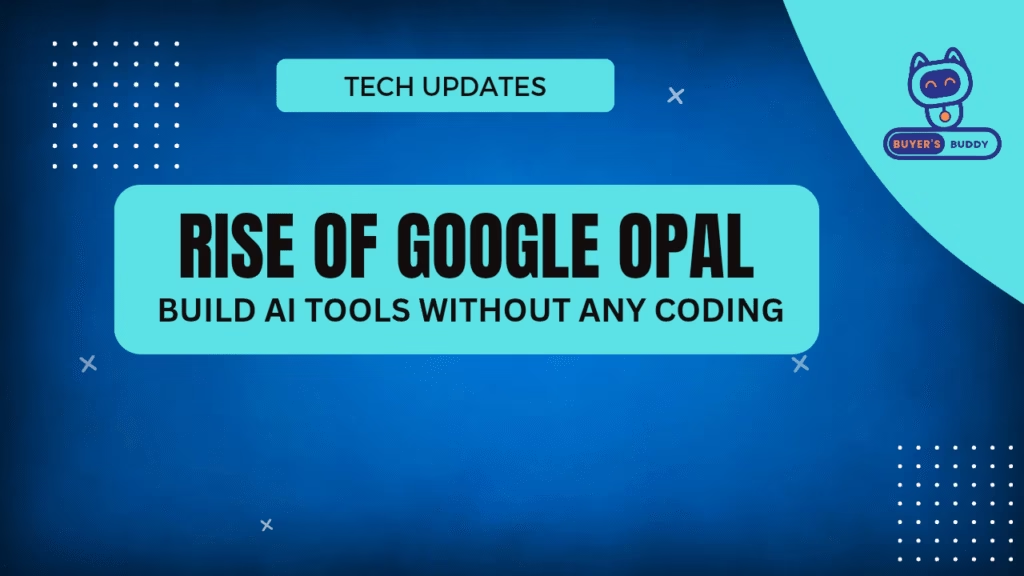The era of AI is no longer just for programmers and tech experts. With the launch of Google Opal, the landscape is fundamentally transforming—ushering in a wave of easy, accessible, no-code AI app development that sets the stage for a democratized future in artificial intelligence.
Table of Content
- What Is Google Opal?
- Why Is Opal a Big Deal?
- Key Features of Google Opal
- 1. Drag-and-Drop Interface
- 2. Pre-built AI Components
- 3. No-Code Data Connection
- 4. Easy Deployment
- 5. Secure and Private
- Real-World Use Cases: Who Benefits from Opal?
- The Democratization of AI
- Limitations and Challenges
- Opal vs. Competitors
- Getting Started with Google Opal
- Future Outlook: How Opal May Change Tech
- Final Thoughts
What Is Google Opal?
Google Opal is a no-code AI app builder announced by Google in 2025. Its primary mission is to grant anyone—not just developers—the power to create, deploy, and share custom AI-powered applications with ease. Imagine designing a smart app that automates tasks, generates insights, or interacts using natural language—all from a friendly, drag-and-drop interface with zero lines of code.
Why Is Opal a Big Deal?
AI has increasingly become central to modern businesses and daily life. Yet, building AI tools has traditionally demanded extensive programming and a grasp of complex data science principles. Opal bridges this technical gap.
- Accessibility: People without a tech background can tap into powerful AI, scaling innovation far beyond the world of engineers.
- Speed: What once took weeks or months of development can now be achieved in hours.
- Scalability: Businesses—startups, SMEs, or large enterprises—can create task-specific tools for everything from customer service to workflow automation, all internally.
- Collaboration: Opal’s platform encourages sharing and community-building, akin to the app store revolution for smartphones.
Key Features of Google Opal
1. Drag-and-Drop Interface
At Opal’s heart is an intuitive interface. You build logic by visually linking blocks, similar to how platforms like Scratch or MIT App Inventor work—but now with advanced AI behind the scenes. Simply select a function—like Image Classification, Chatbot, or Text Summarization—drag it onto your app canvas, and configure inputs and outputs.
2. Pre-built AI Components
Opal comes loaded with modules based on Google’s leading AI models. These include:
- Natural Language Processing (NLP): Sentiment analysis, entity extraction, summarization, translation, chatbots.
- Vision: Image recognition, barcode scanning, photo filters, object detection.
- Data Analytics: Prediction (regression, classification), anomaly detection, recommendation systems.
- Voice: Speech recognition and voice-to-text.
3. No-Code Data Connection
Users can link their apps with data sources like Google Sheets, Drive, Gmail, or external APIs. This means your Opal app can read, process, and update information in real time.
4. Easy Deployment
Once built, apps can be deployed to the web, integrated into existing business workflows, sent as shareable mini-apps, or even embedded into Google Workspace products. There is no manual hosting, DevOps, or infrastructure management—Google hosts and scales everything in the cloud.
5. Secure and Private
Opal apps follow Google’s security best practices. With options for granular permissions, SSO integration, and enterprise admin controls, both individuals and organizations can feel confident about data safety.
Real-World Use Cases: Who Benefits from Opal?
– Small Businesses
Think of a local cafe owner building a custom loyalty tracking chatbot, or an HR manager automating leave approvals using a workflow app.
– Teachers and Students
Opal empowers educators to automate grading, build AI tutors, or develop classroom management tools without IT support.
– Entrepreneurs
Rapidly prototype and iterate new app ideas, test AI-powered features, and ship MVPs to market much faster.
– Nonprofits and NGOs
Deploy custom volunteer sign-up bots, donation trackers, or impact analysis tools, saving costs on technology development.
– Large Enterprises
Build workflow automation, customer service bots, fraud detection tools, and integrate AI features into daily operations—all managed internally by non-coders.
The Democratization of AI
By lowering the bar, Opal puts powerful technology in everyone’s hands. This isn’t just about “making apps easier”—it’s helping more people solve problems with technology and creativity. Here’s why that matters:
- Innovative Diversity: New voices mean new solutions. A nurse, artist, or small business owner sees problems differently than a software engineer does.
- Faster Digital Transformation: Organizations constantly need custom tools. Opal shortens the gap between idea and solution, accelerating productivity company-wide.
- Bridging the Skill Gap: Countries and communities with fewer resources for software engineering can now participate fully in the AI revolution.
Limitations and Challenges
While Opal is a leap forward, it’s not without boundaries:
- Complexity Ceiling: Truly complex or novel AI solutions still require custom code.
- Template Overlap: Popular workflows may become repetitive as many users rely on similar templates.
- Data Privacy: While Google offers controls, users must be aware of what data their apps access, process, or store, especially in sensitive domains.
- Learning Curve: While targeted for non-coders, effective use of AI still requires learning basic concepts to avoid “black box” pitfalls.
Opal vs. Competitors
No-code platforms are on the rise (Airtable, Zapier, Microsoft Power Apps, Bubble), but Opal’s direct integration with Google’s AI and productivity ecosystem puts it in a unique position. Features like Google-grade NLP, vision AI, seamless Workspace connection, and scalable deployment make Opal a formidable all-in-one player.
Getting Started with Google Opal
- Access the Platform: Sign up using your Google account on the Opal website or via the Google Cloud/Workspace console.
- Explore Templates: Browse a marketplace of ready-made AI mini-apps.
- Build Your First App: Drag blocks, connect your data sources, test your app in the simulator.
- Share and Deploy: Publish privately or publicly, send links, integrate with your organization, or embed in Google Docs/Sheets.
- Iterate: Gather feedback and upgrade your app with richer functionality.
Future Outlook: How Opal May Change Tech
- Creates a new app economy, similar to how iOS and Android app stores did for smartphones.
- Accelerates innovation, as non-engineers contribute new ideas and apps at breakneck pace.
- Boosts AI literacy, as users learn core AI concepts through hands-on creation.
- Expands enterprise capabilities, letting every department “do more with less” by building in-house tools.
Final Thoughts
Google Opal is more than a tool—it’s a movement that promises to widen the circle of people who build with AI. As it evolves, barriers will fall, and the creativity of billions will find new expression in apps that serve real needs, both simple and profound.
If you’re interested in technology that empowers, Opal’s arrival is among 2025’s most important stories. Whether you’re a curious student or a business leader, there’s never been a better time to get hands-on with AI—no coding required.


